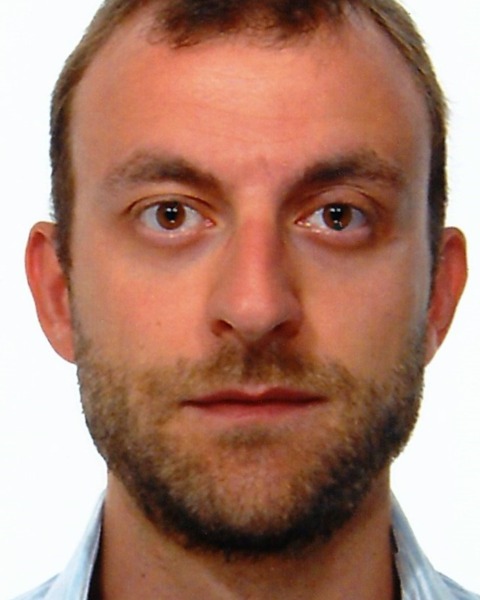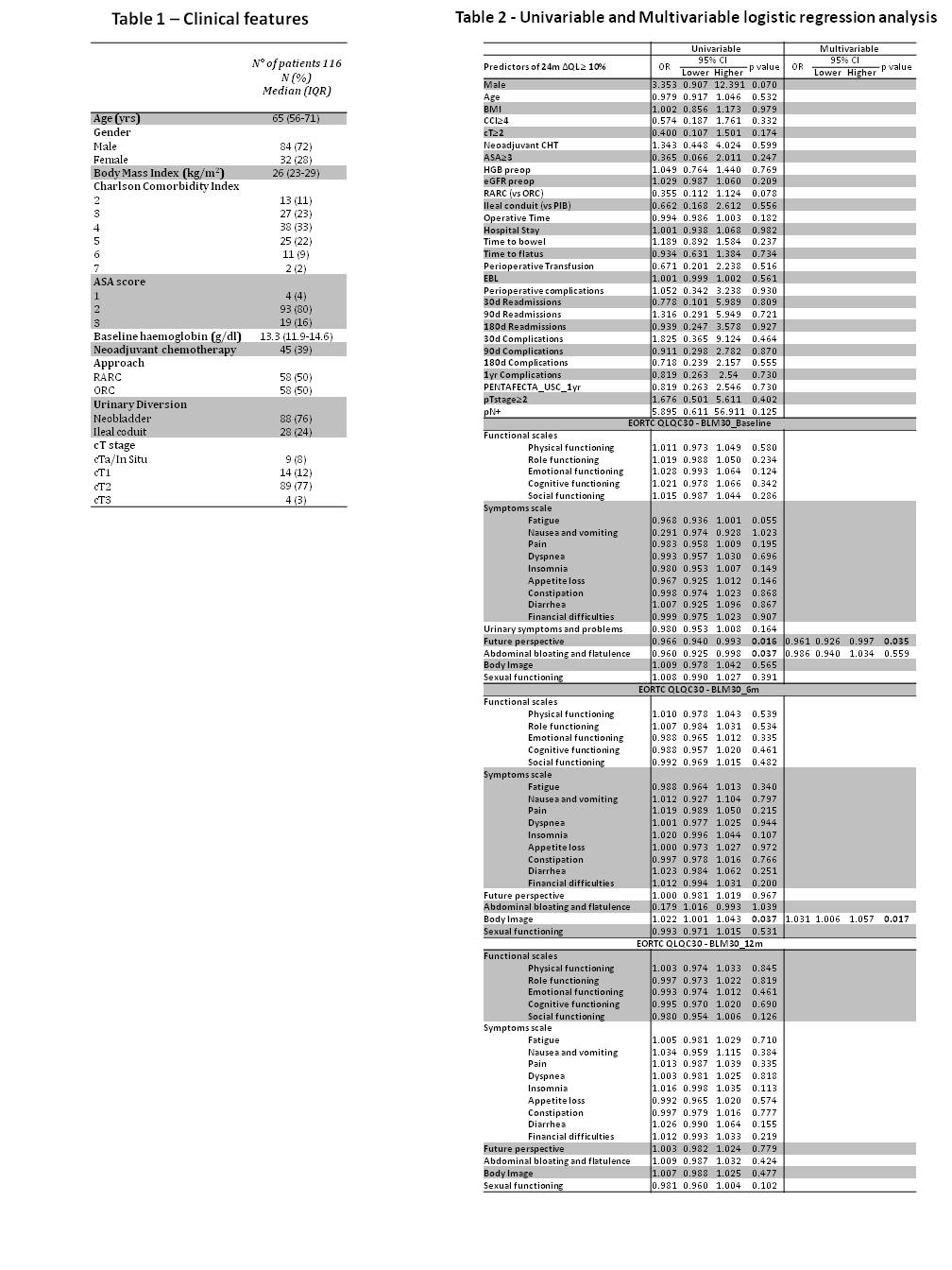Back
Poster, Podium & Video Sessions
Moderated Poster
MP23: Bladder Cancer: Invasive III
MP23-12: Emotional Function and early Body Image acceptance as independent predictors of improved long-term Health-Related Quality of Life in patients receiving Radical Cystectomy with Urinary Diversion: implications for perioperative counselling
Saturday, May 14, 2022
8:45 AM – 10:00 AM
Location: Room 225
Riccardo Mastroianni*, Gabriele Tuderti, Umberto Anceschi, Alfredo Maria Bove, Aldo Brassetti, Mariaconsiglia Ferriero, Leonardo Misuraca, Salvatore Guaglianone, Michele Gallucci, Giuseppe Simone, Rome, Italy

Riccardo Mastroianni, MD
IRCCS "Regina Elena" National Cancer Institute
Poster Presenter(s)
Introduction: Radical Cystectomy (RC) with urinary diversion (UD) is still considered a complex surgery associated with significant morbidity and unfavorable impact on Health-Related Quality of Life (HRQoL). Analysis of HRQoL and predictors of its worsening are too often misevaluated. In this study, we evaluated predictors of 2yr deterioration of HRQoL from an ongoing randomised controlled trial (RCT) comparing ORC and RARC with totally intracorporeal UD (NCT03434132).
Methods: Patients were eligible if they had a diagnostic TURBt with cT2-4cN0cM0, or recurrent HG NMIBC and no anesthesiologic contraindications to robotic surgery. Between January 2018 and September 2020, 116 patients were enrolled with a covariate adaptive randomization process based on: BMI, ASA, baseline haemoglobin, planned UD [Padua ileal bladder or ileal conduit], neoadiuvant chemo and cTstage. Data from self-assessed questionnaires (EORTC generic QLQ-C30 and QLQ-BLM30), perioperative and postoperative data were collected. Poor HRQoL was defined as a 2yr self-assessed Global Health status/QoL decrease =10% (?QL=10%) from baseline. Univariable and multivariable logistic regression analysis were performed to identify predictors of 2yr ?QL=10%.
Results: Out of 116 patients enrolled, 52 reached at least 2yrs of follow-up and were included in the study. Baseline clinical features were reported (Tab. 1). Patients were predominantly male (72%), median age was 65 (IQR 56-71), and neobladder was the mostly UD performed (76%). On multivariable logistic regression baseline future perspective (OR 0.961, 95% CI 0.926-0.997; p=0.035) and 6mo self-assessed body image (OR 1.036, 95% CI 1.006-1.057; p=0.017) were independent predictors of 2yr ?QL=10% decrease.
Conclusions: The unexpected protective role of higher emotional function on significant 2-yr HRQoL decrease highlights the key role of patients’ awareness about complexity of RC and the need for a strict follow-up to early identify and treat complications of UDs. Earlier body image acceptance as independent predictor of improved HRQoL further supports the role of perioperative counselling to achieve and maintain high levels of HRQoL following RC and UD.
Source of Funding: none

Methods: Patients were eligible if they had a diagnostic TURBt with cT2-4cN0cM0, or recurrent HG NMIBC and no anesthesiologic contraindications to robotic surgery. Between January 2018 and September 2020, 116 patients were enrolled with a covariate adaptive randomization process based on: BMI, ASA, baseline haemoglobin, planned UD [Padua ileal bladder or ileal conduit], neoadiuvant chemo and cTstage. Data from self-assessed questionnaires (EORTC generic QLQ-C30 and QLQ-BLM30), perioperative and postoperative data were collected. Poor HRQoL was defined as a 2yr self-assessed Global Health status/QoL decrease =10% (?QL=10%) from baseline. Univariable and multivariable logistic regression analysis were performed to identify predictors of 2yr ?QL=10%.
Results: Out of 116 patients enrolled, 52 reached at least 2yrs of follow-up and were included in the study. Baseline clinical features were reported (Tab. 1). Patients were predominantly male (72%), median age was 65 (IQR 56-71), and neobladder was the mostly UD performed (76%). On multivariable logistic regression baseline future perspective (OR 0.961, 95% CI 0.926-0.997; p=0.035) and 6mo self-assessed body image (OR 1.036, 95% CI 1.006-1.057; p=0.017) were independent predictors of 2yr ?QL=10% decrease.
Conclusions: The unexpected protective role of higher emotional function on significant 2-yr HRQoL decrease highlights the key role of patients’ awareness about complexity of RC and the need for a strict follow-up to early identify and treat complications of UDs. Earlier body image acceptance as independent predictor of improved HRQoL further supports the role of perioperative counselling to achieve and maintain high levels of HRQoL following RC and UD.
Source of Funding: none


.jpg)
.jpg)